Home Tags Posts tagged with "aurora australis"
aurora australis
The Great Barrier Reef is the pride of Australia. The reef’s astounding formations provides a fantastic look on the earth’s largest coral reef. The reef contains a wealth of marine life and involves more than 3,000 individual reef frameworks and coral cays. The Great Barrier Reef is also adjacent to many pleasant tropical islands with a portion of the world’s most delightful sun-splashed, brilliant beaches.
The Great Barrier Reef is part of the seven wonders of the known world. The reef is so big that you can see it from space. The Reef is greater than the Great Wall of China is known as the largest living organism on earth. Due to its characteristic excellence, the Great Barrier Reef has turned out to be one of the world’s most sought-after tourist spot.
It is a Place Full of Adventures
A guest of this site can begin to do activities including snorkeling, scuba diving, or helicopter trips, going on uncovered watercraft rides, glass-bottomed vessel seeing, semi-submersible rides, etc. The beach near the Great Barrier Reef is a safe place for watersports goers. Regardless of whether you’re skimming the sea depths, cruising at first glance, or taking off through the air in a helicopter, your voyage through the reef is certain to leave a lasting impression.
Guidable Tips of the Things You Can Do There:

-
Visit Whitehaven Beach
Being branded as The Nicest Beach in Australia, Whitehaven Beach is the benchmark beach that everybody pictures out when thinking of the Great Barrier Reef. With its perfect white silica sand conflicting perfectly with the encompassing dynamic blue waters, it’s not hard to perceive any reason why Whitehaven is such an exceptionally desired travel destination.
-
Diving and Snorkeling
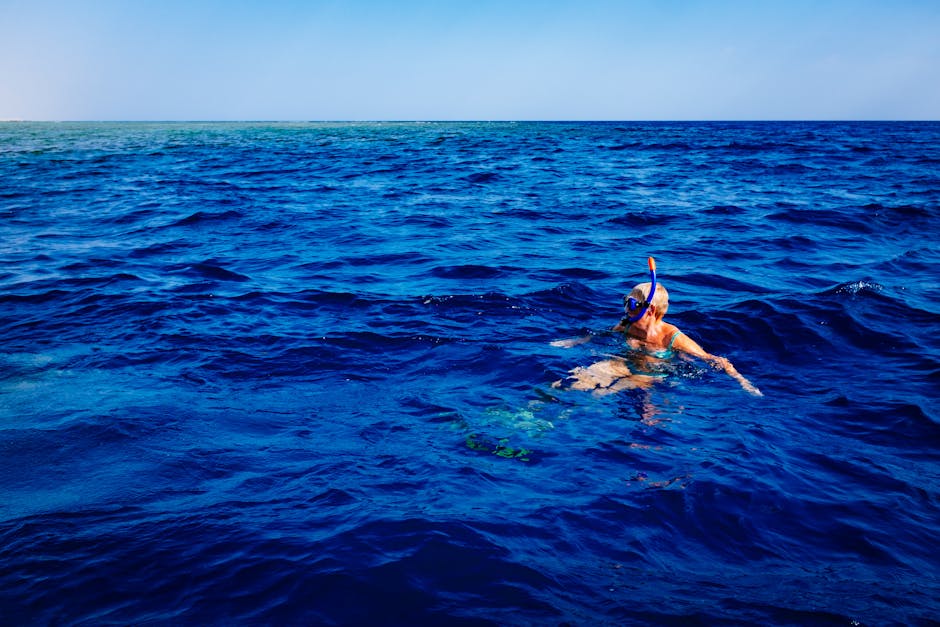
A lot of guests say that a scuba mask is the best experience when in the Great Barrier Reef. However, most would disagree and say that the best thing to do is to swim and be one with the range’s dive spots. While picking which regions to explore, consider your expertise level, the time of travel included and the excursion length around there. Two of the most prominent diving and snorkeling areas are the Cairn Reefs and the Ribbon Reefs.
-
Scenic Flight Ballooning
Inflatable Hot air balloons offer an extraordinary experience to watch the Tropical North Queensland from up above. There are a lot of thirty-minute flight choices to choose from which leaves from Cairns. Venture into the Atherton Tablelands with an expert tour guide that will guarantee that you have the best ballooning trip ever. You may also check out other Great Barrier Reef Tours from several groups to make your adventures worthwhile.
-
Daintree Rainforest Tour
On your Daintree Rainforest visit, you can encounter a pocket of old tropical rainforest on the driest landmass on earth. The tourist guides are specialists on the fascinating vegetation and wildlife of the Daintree’s wet tropic beach. The swamps also reveal to visitors the secrets of its flora and fauna. Watch saltwater crocodiles swim along as you voyage on the Cooper Inlet – the core of the Daintree.
If you wish to take a picture perfect view of the Great Barrier Reef, taking a plane trip is the best way to snap photos. Specific marvellous destinations like Hardy Lagoon, Heart Reef, and Whitehaven Beach can be appreciated even more when you are up above, having a seaplane flight. Make your adventures memorable by taking pictures that will surely be worth a thousand words.
-
Have a nightlife in the beach
After taking some time to venture and explore the beauty of Great Barrier Reef, The best way to end your day is to party and have fun at the beach. It would be more fun if you can catch live bands, mingle in the beer garden, watch a fireworks display or witness a fire dance offered by a particular resort.
Takeaway
The amazing creation of nature like the Great Barrier Reef, is too beautiful just to ignore. Let us learn to keep calm, relax and explore the wonders of the world we are living. Before taking any steps to explore the breathtaking tourist spots, always make sure to plan your trips, make an itinerary and then get the most out of your travels. Happiness is always a choice so choose to be happy while travelling.
Salvează
A rescue mission for Akademik Shokalskiy scientific ship stuck in ice in Antarctica is under threat as reports have emerged that one of the assisting vessels may itself be stuck.
Fifty-two passengers and four crew members were due to be evacuated by helicopter from China’s Xue Long ship as soon as conditions allowed.
However, the Xue Long has barely moved in a day and may be stuck in the ice.
The research vessel Akademik Shokalskiy has been trapped for nearly a week with 74 scientists, tourists and crew.
The ship is stocked with food and is in no danger, the team on board says.
The planned air evacuation required that the two icebreakers in the immediate area – the Xue Long and the Australian Aurora Australis – be positioned close to each other in open water, clear of the pack ice.
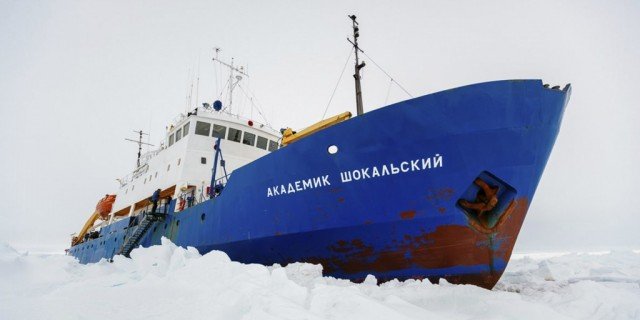
Akademik Shokalskiy rescue is under threat as one of the assisting vessels may itself be stuck
However, the captain of the Xue Long has told the Shokalskiy that he is keeping his vessel in a “holding position”.
The Aurora Australis, is now understood to be planning to carve through the dense thick pack to assist the Xue Long.
The initial plan had been for a helicopter from the Xue Long to carry people in groups of 15 up from the pack ice next to the Shokalskiy.
The airlifted passengers would then be transferred by a small boat, deployed from the Australian icebreaker, onto the Aurora Australis.
The expedition members would then have travelled to Australia’s Antarctic base at Casey some four days’ voyage away.
However, if the Chinese vessel is also stuck and the Australian vessel cannot help it reach clear water, there will be no airlift.
Under the initial plan, the remaining crew members would have stayed on board until another, more powerful US icebreaker arrived in up to 10 days’ time.
However, it may now be that all of those on board may have to wait for the US icebreaker, the Polar Star.
Earlier attempts by Chinese and French icebreakers to reach the ship were also foiled by the thick ice.
Akademik Shokalskiy was trapped on Christmas Eve by thick sheets of ice, driven by strong winds, about 1,500 nautical miles south of Hobart – the capital of the Australian state of Tasmania.
[youtube WhKsfu1sOHk 650]
Russian ship Akademik Shokalskiy stranded in East Antarctica since Christmas Day remained stuck as the latest rescue efforts were thwarted by fierce winds and poor visibility.
An Australian icebreaker trying to reach the Russian scientific mission ship was forced to turn back.
Earlier attempts by Chinese and French icebreakers to reach the Akademik Shokalskiy were also foiled by the thick ice.
Seventy-four scientists, tourists and crew are on the ship.
The vessel is being used by the Australasian Antarctic Expedition to follow the route explorer Douglas Mawson travelled a century ago.
Scientists on board thought the ice was much thicker than usual for this time of year.
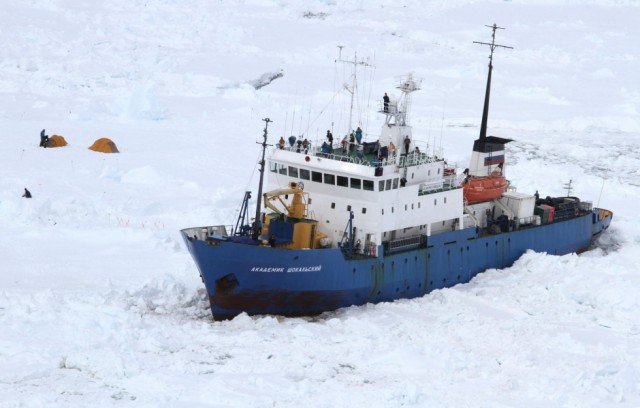
Akademik Shokalskiy stranded in East Antarctica since Christmas Day remained stuck as the latest rescue efforts were thwarted by fierce winds and poor visibility
The Aurora Australis icebreaker had been forced to turn back to clear water and was repositioning to try to find another route towards the Shokalskiy.
In a statement, the Australian Maritime Safety Authority (AMSA) said: “The area where the MV Akademik Shokalskiy is beset by ice is currently experiencing winds of up to 30 knots and snow showers.”
“These weather conditions have resulted in poor visibility and made it difficult and unsafe for the Aurora Australis to continue today’s attempt to assist the MV Akademik Shokalskiy.”
Earlier, it was thought that passengers could be winched to safety by a helicopter on board the Chinese icebreaker, which had to abort its rescue mission on Saturday.
However, AMSA spokeswoman Lisa Martin told Reuters news agency: “We can’t fly a helicopter in these conditions either. There is essentially nothing we can do at this point of time.”
The Aurora Australis would have to wait for the weather to improve before making a second rescue attempt, she added.
Despite being trapped, the scientists on board have continued their experiments, measuring temperature and salinity through cracks in the surrounding ice.
Akademik Shokalskiy was trapped on Christmas Day by thick sheets of ice, driven by strong winds, about 1,500 nautical miles south of Hobart – the capital of the Australian state of Tasmania.
[youtube f7i42MH5OzQ 650]
An Australian vessel is en route to East Antarctica in a renewed bid to free Akademik Shokalskiy scientific mission ship trapped in dense pack ice since Christmas.
Earlier rescue attempts by Chinese and French icebreakers were foiled by the thick ice.
Seventy-four scientists, tourists and crew are on the Akademik Shokalskiy.
The vessel is being used by the Australasian Antarctic Expedition to follow the route explorer Douglas Mawson travelled a century ago.
The Shokalskiy remains well stocked with food and is in no danger, according to the team.
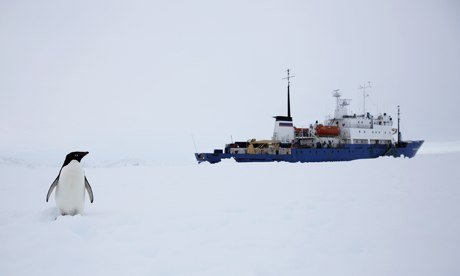
An Australian vessel is en route to East Antarctica in a renewed bid to free Akademik Shokalskiy
Despite being trapped, the scientists have continued their experiments, measuring temperature and salinity through cracks in the surrounding ice.
The Australian Maritime Safety Authority (AMSA), which is coordinating the rescue, said the Aurora Australis was expected to reach the trapped research ship on Sunday around 12:00 GMT.
The powerful icebreaker can cut ice up to 5.2 ft thick – potentially still enough to plough through the estimated three-metre wall surrounding the Shokalskiy.
If this latest relief operation fails, passengers could be winched to safety by a helicopter on board the Chinese icebreaker, which had to abort its rescue mission on Saturday.
The Snow Dragon came within seven nautical miles of the Russian ship before stalling and being forced to return to the open sea.
[youtube MOdZoG_v4Cg 650]
An amazing picture of the aurora borealis – the Northern Lights – shows how the phenomenon can light up the sky near the North Pole.
This weekend was set to be a bumper time for viewing the extraordinary apparition, thanks to unusual solar activity.
This picture was taken above Yellowknife, a city in Canada’s Northwest Territories.
The image was published as part of the AuroraMAX project, an initiative by the Canadian Space Agency which aims to help the public experience the wonder of the Northern Lights.
AuroraMAX project has been timed to coincide with the next solar maximum, the period when solar activity reaches an 11-year high, forecast to come in February 2013.
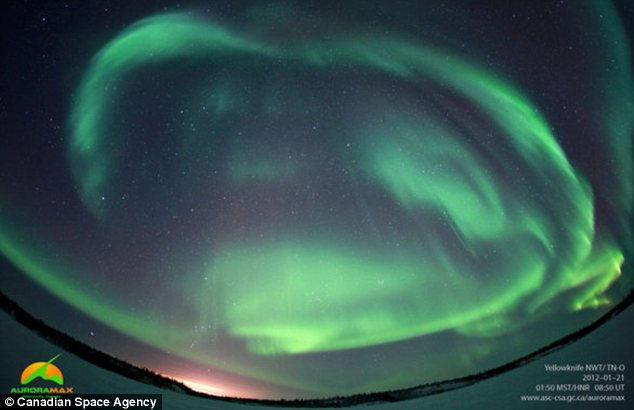
An amazing picture of the aurora borealis - the Northern Lights - shows how the phenomenon can light up the sky near the North Pole
The solar maximum causes an increase in the number of sunspots and in the geomagnetic activity which causes the aurora borealis and its South Pole equivalent, the aurora australis.
A short-term version of the same effect is set to occur on Sunday afternoon, when a blast of solar activity reaches the earth.
On Thursday astronomers noticed a coronal mass ejection, a burst of electrically charged particles thrown out by the sun.
Three days later, the storm will pass close to the earth, causing an upturn in the prevalence and extent of the aurorae.
In the past, similar incidents have caused the Northern Lights to be visible as far south as Virginia and Arkansas.






